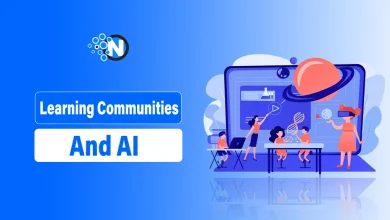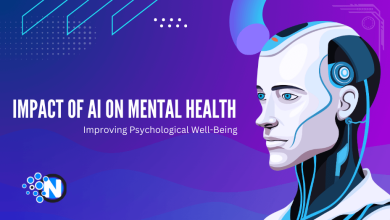AI Architects, Not AI Mechanics: Why Strategy Is the New Source Code

Everything is done in the gold rush to implement artificial intelligence. Companies accumulate data, bring in machine learning engineers, run model training experiments in the hope that something revolutionary will emerge, and so on. And here’s the problem: nearly all these initiatives fail to scale or generate value.
Why? Because many organizations confuse AI mechanics with AI architecture. They focus on building models, not systems. They chase algorithms, not outcomes.
This is why the most innovative companies don’t look for mechanics to new source code models; they look for an AI development company that can act as an architect, building intelligent systems with foresight, purpose, and longevity.
From Building Code to Building Vision
Think of AI development like city planning.
- Mechanics know how to pour concrete or lay cables.
- Architects imagine the city, how it connects, how it grows, and how it serves people over time.
The same logic applies in AI. Algorithms are tools. Data pipelines are infrastructure. But without a blueprint, even the most advanced models can lead to dead ends.
Early decisions-like choosing data sources, setting success metrics, and designing for integration-have outsized long-term impacts. Good AI architecture isn’t about quick fixes. It’s about laying a foundation for growth, resilience, and relevance in a future defined by constant change.
Strategic AI development means designing with people, organizations, and ethics in mind, not just machines. The same is true in AI. Algorithms are tools. Data pipelines are wiring. But without a blueprint, without clarity on where you’re going and why, even the most sophisticated models can lead to dead ends.
What Makes Strategic AI Different?
What separates an ordinary AI initiative from a transformational one is strategy.
Strategic AI development involves:
- Start with strategy, not syntax: Understand business problems before writing a single line of code.
- Assess readiness: Evaluate data maturity, infrastructure, and team capabilities.
- Design a roadmap: Designing a long-term roadmap, not a one-off pilot
- Thinking modularly: building systems that can evolve, scale, and adapt
This isn’t a one-size-fits-all approach. Every organization has a different “city” to build. That’s why they need an AI partner who acts as an architect, not just a coder.
Why Strategy Beats Hype Every Time
Much of today’s AI buzz focuses on models – GPTs, transformers, vision models, and so on. But the real game-changer is not the technology itself.
It’s how that technology is deployed in context. The winning edge comes from the strategic use of AI, not AI for AI’s sake.
Too many organizations fall into the trap of chasing trends without an apparent reason. They launch chatbot pilots or computer vision projects simply because competitors do.
However, when the strategic “why” is missing, even the most advanced models fail to deliver impact. On the other hand, when AI is anchored in real business goals, improving customer retention, optimizing supply chains, and detecting fraud, it becomes a lever for transformation, not a science experiment.
That’s why strategy must come before the stack.
Better questions lead to better AI:
For example, instead of asking, “How do we use AI?” a better question is:
- “What business process is underperforming – and why?”
- “Could predictive insights improve decision-making here?”
- “Is automation the goal, or augmentation?”
This thinking requires domain knowledge, cross-functional collaboration, and a consultative mindset – the type offered by top-tier AI development companies like N-iX.
From Data Swamps to Intelligent Infrastructure
One of the biggest mistakes of businesses is jumping into AI without preparing their data. They underestimate the chaos, fragmentation, and lack of labeling that plague real-world datasets. AI architects see this as step one, not step five.
They:
- Audit the state of data sources
- Identify gaps and inconsistencies.
- Build scalable, maintainable pipelines.
- Ensure compliance, privacy, and governance from the start.
Mechanics patch problems, while architects solve them at the root. This foundational thinking leads to more stable, transparent, and explainable AI.
Human-Centric by Design
True AI design isn’t machine-centric. It’s human-centric.
Because the smartest AI is useless if no one understands, trusts, or uses it. This is why strategic AI design:
- Prioritizes explainability and transparency
- Aligns with how people make decisions
- Enhances, not replaces, human input
Great AI doesn’t just empower systems, it empowers teams. Forward-thinking AI partners train internal teams, foster AI literacy, and embed trust into every user interaction.
What to Look for in an AI Development Company
If you’re choosing a partner for your AI journey, ask yourself:
- Do they ask the hard strategic questions first or jump into code?
- Can they assess your organization’s AI maturity with clarity?
- Do they have a track record of building adaptable, not rigid, solutions?
- Will they help you manage risk, governance, and compliance?
- Can they design for people as much as for performance?
These are all signs of a company that thinks like an architect, not just a mechanic.
Conclusion: Strategy is the New Source Code
The future of new source code will not be coded just in Python or TensorFlow. It will be shaped by the companies that approach AI with vision – those who architect outcomes, not just algorithms.
As businesses move from experimentation to enterprise-scale AI, the need for strategic alignment becomes non-negotiable. Code can be written quickly. But architecture that takes time, insight, and partnership.
N-iX demonstrates this new approach to building AI companies. With a solid base in consulting, data engineering, and AI ethics, they help firms not just do AI but succeed with it strategically, sustainably, and humanely.
So, if you’re starting your AI journey, don’t just look for a mechanic to build the engine. Look for an architect to help you design the road.




